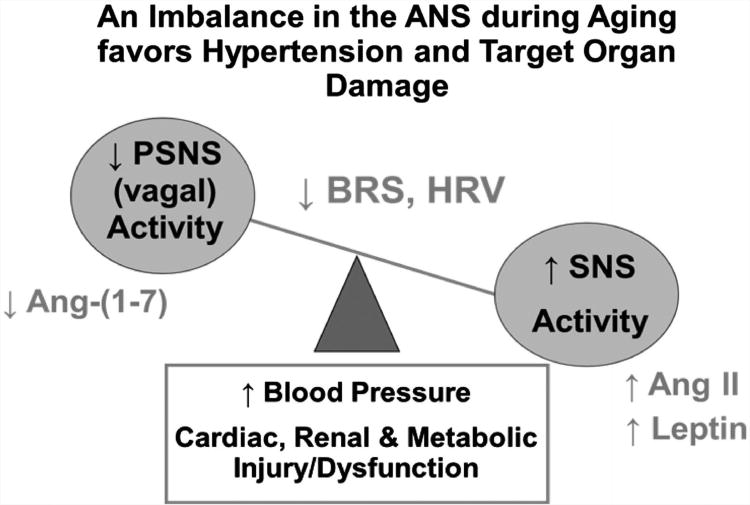Figure 1.
Schematic of proposed features associated with the imbalance in the autonomic nervous system during aging. During aging there is a shift in the balance of the autonomic nervous system (ANS) towards the sympathetic nervous system (SNS). This may be influenced by circulating or local brain levels of angiotensin (Ang) II and leptin. The lower activity of the parasympathetic nervous system (PSNS) is proposed to result at least in part from an age-related decline in Ang-(1–7). Lower Ang-(1–7) and higher Ang II or leptin in the brain medulla would predispose to a decline in baroreceptor reflex sensitivity (BRS) for control of heart rate and heart rate variability (HRV), both of which are associated with aging. Moreover, impairments in BRS and HRV can contribute to target organ damage, including metabolic dysfunction, with or without an increase in blood pressure. A full color version of this figure is available at the Hypertension Research journal online.

